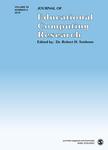版权所有:内蒙古大学图书馆 技术提供:维普资讯• 智图
内蒙古自治区呼和浩特市赛罕区大学西街235号 邮编: 010021

作者机构:Univ Split Fac Sci Split Croatia Elementary Sch Mejasi Split Croatia Univ Split Fac Sci Dept Comp Sci Rudera Boskovica 33 Split 21000 Croatia
出 版 物:《JOURNAL OF EDUCATIONAL COMPUTING RESEARCH》 (J. Educ. Comput. Res.)
年 卷 期:2024年第62卷第5期
页 面:1302-1326页
核心收录:
主 题:programming misconceptions programming novices Python MakeCode for micro:bit K-12
摘 要:The use of a pedagogical approach mediated transfer with the bridging method has been successful in facilitating the transitions from block-based to text-based programming languages. Nevertheless, there is a lack of research addressing the impact of this transfer on programming misconceptions during the transition. The way programming concepts are taught to K-12 learners can later result in misconceptions for adult learners. The main objective was to examine the impact of mediated transfer using the bridging method pedagogical approach on the prevalence of programming misconceptions. We conducted a quasi-experimental study in school settings during informatics (computer science) classes among 163 sixth-grade students. The control group received traditional programming lectures using the text-based programming language, Python. Conversely, the experimental group utilized a mediated transfer pedagogical approach by starting with the block-based programming language MakeCode for micro:bit before transitioning to the text-based Python. Our findings indicate that the experimental group significantly reduced programming misconceptions in fundamental programming concepts: variables, sequencing, selection, and loops - compared to the control group. This suggests that the use of block-based programming language as an initial step in programming education, followed by a structured transition to text-based programming language, can effectively mitigate common misconceptions among K-12 learners.